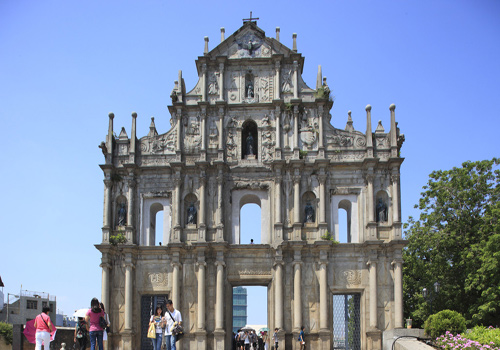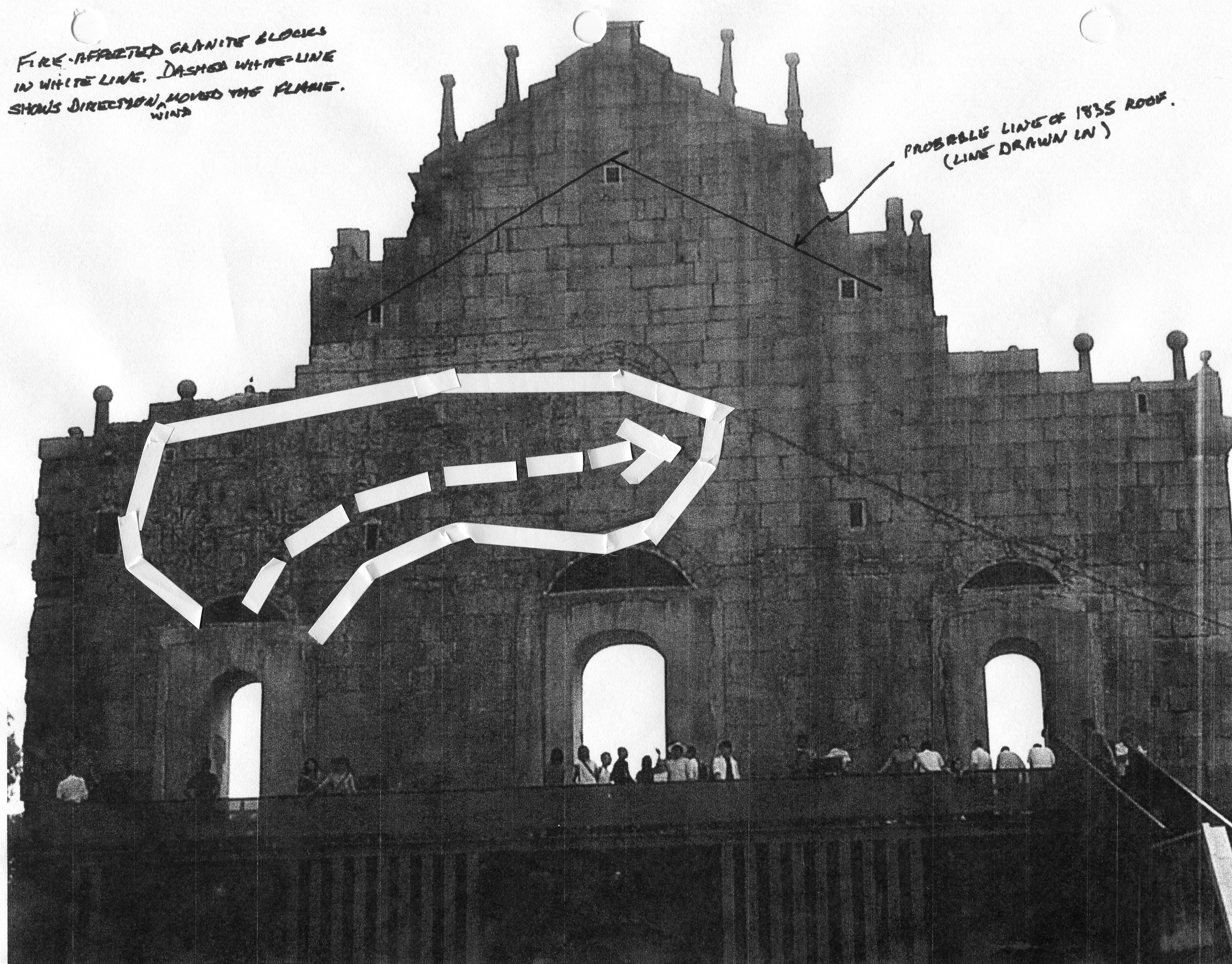Granite is a common type of felsic intrusive igneous rock that is granular and phaneritic in texture. Granites can be predominantly white, pink, or gray in color, depending on their mineralogy. The word "granite" comes from the Latin granum, a grain, in reference to the coarse-grained structure of such a holocrystalline rock. Strictly speaking, granite is an igneous rock with between 20% and 60% quartz by volume, and at least 35% of the total feldspar consisting of alkali feldspar, although commonly the term "granite" is used to refer to a wider range of coarse grained igneous rocks containing quartz and feldspar.
Source: www.wikipedia.org
Granite of St. Paul's ruins in Macau
Portuguese Jesuits settled in Macau in 1562 and constructed their first church in 1580 situated next to the College of St. Paul. It is not clear whether this church had a rammed-earth front wall or one constructed of granite blocks. A fire in 1595 however destroyed most of the church’s wooden structure. The Jesuits rebuilt the church, but a second fire in 1601 destroyed the building again. Rebuilding began again in 1602. The remaining granite-block front wall was enlarged and a granite façade carved by Japanese Christians was added between 1620 and 1627 and completed in 1634 (Anon. 2012). During a typhoon in 1835, a third fire again destroyed the church damaging parts of the granite façade and the supporting wall behind. The wall and façade have been strengthened since the last fire but the church proper has not been rebuilt.

Alteration of St. Paul’s granite building-stones
St. Paul's granite builing-stones are not in its original condition anymore. The alterations of this building stone are unique and can be explored in this earthcache. Go to the rear side of the ruins and examine the granite stones. Many of the granite blocks in the wall backing the façade display spheroidal/onion-skin characteristics especially those directly above the eastern arch (left) and the middle arch.
There are two theories from where these special formations in the granite result.
-
Chemical erosion
the patterns might be related in some way to the intense chemical weathering that over geologic time produces the numerous granite core-stones so common to Hong Kong, Macau and surrounding areas. In general, three sets of joints in a rock such as granite leads to the formation of rhomb-shaped blocks that when weathered ultimately form core stones. Subsequent erosion leaves the land surface littered with core stones.
-
Fire
Another mechanism that could be responsible for the spheroidal/onion-skin characteristics in the granite blocks is fire. Spheroidal/onion-skin features develop in granite building-stones where they have been subjected to severe building fires. Reddening of granite blocks is said to be associated with the conversion of ferrous to ferric iron-compounds in the granite as a consequence of fire (Winkler, 1975). Many granite building-stones exposed on the rear side of the church wall exhibit spheroidal/onion-skin characteristics and some show reddening. The granite blocks showing the most well developed spheroidal/onion-skin characteristics are those immediately above the east (left) arch. Some blocks further to the west (right) show these patterns also but in a less well-developed form.

To log this earthcache, please answer the following questions:
-
It is known that the Jesuits used fresh granite blocks for construction. Calculate the time period which the granite has been exposed to erosion and weathering. Do you think that this time is geologically long enough to produce such a major alteration of a hard rock like granite?
-
Have a closer look to the three arches: the west arch, middle arch and east arch. It is known that there was a typhoon at the time of the 1835 fire. Supposing that the sheroidal/onio-skin characteristics have been caused by the fire, define the wind direction by examining at which side the fire erosion pattern at the granite are stronger.
-
The fire caused the granite trim to spall (the process in which a fragment or chip is released from a piece of stone), immediately above the arch and along both sides of the opening. The two Corinthian granite pillars on either side also are spalled and cracked. The two main mineral components of granite are feldspars and quartz. Felspar normally makes up at least two thirds of granite, quartz at least another 10%. Knowing that feldspar expands 1-2% between 530-800°C and quartz expands 4-5% at this temperature, can you explain why increasing heat weakens the strength of the rock?
-
If you want, you can also upload a picture of you or your GPS in front of the ruins.
You can log the earthcache after having sent your answers. You do not need to wait for my answer.
Have fun exploring the St. Paul's ruins!
Sources:
https://southchinaenvir.com/historical-perspectives/historic-fire-effects-on-the-granite-wall-of-st-pauls-church-macau/
www.wikipedia.org
http://www.visitourchina.com/macao/attraction/ruins-of-st-paul.html